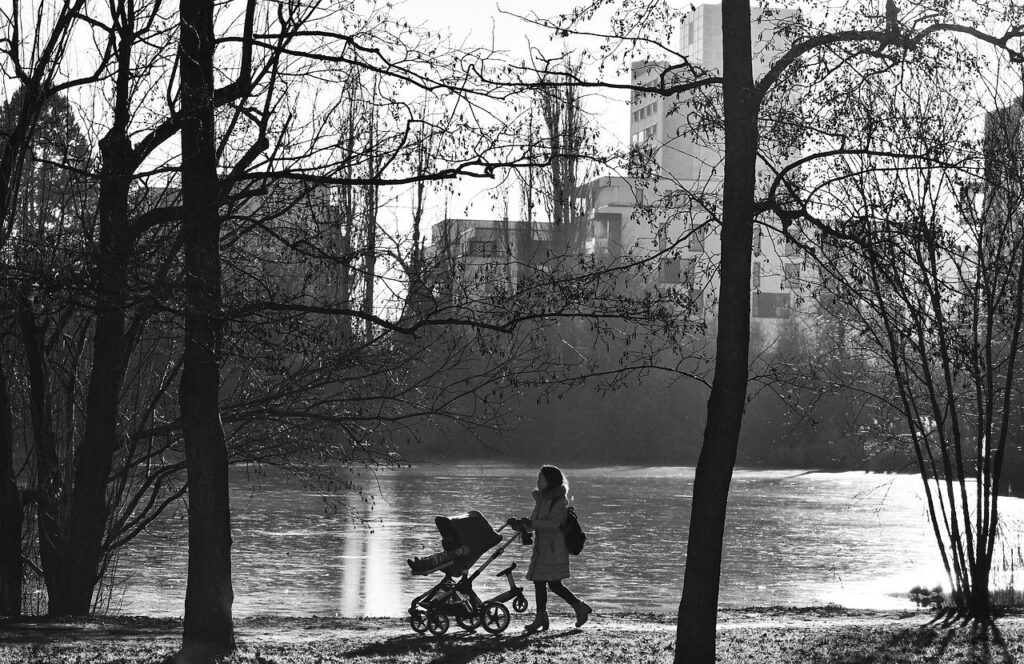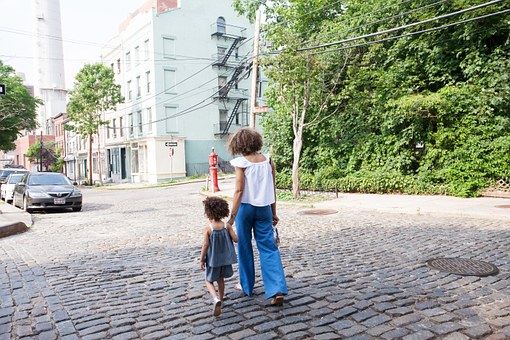“I’m a single parent with primary custody and the past six months have left me unable to choose between parenting and providing: I have to do both, and I don’t have the resources to do either properly.”

I returned from work last Tuesday to find a dusting of white powder on our gray kitchen countertops. I could hear my daughter in her room, participating in her online English class. I ran my finger through the powder and did a taste-test: sugar. Nearby, a box of cornstarch. Clearly my daughter had conducted some sort of experiment—for her online science class, or for herself—while home alone, navigating her first month of sixth grade online.
I smiled for a moment, remembering my latchkey days in the ’80s. I walked a couple miles home from elementary school each weekday—with my older brother, in theory. My mother had instructed him to escort me, but he ran off to the arcade with his friends every time. The walk home didn’t much bother me, aside from the Doberman that always lunged at the fence. Once home, I’d go straight to the kitchen, and, in a fugue state of sorts, inhale whatever convenience foods I could find: hot dogs stuffed with cheese, Vienna sausages, whole bags of Doritos.
I mostly enjoyed that rare hour alone, before my brother returned from the arcade and our mother came home to start dinner. When I discovered the sugar and cornstarch, I imagined my daughter enjoying her rare bit of solo time as well. We’re both introverts, homebodies with a knack for self-entertainment.
My son started high school this fall and chose to do a hybrid model with two days of in-person school and three days online. My daughter, an incoming middle-schooler, chose the full-time online option. Just as school started, I returned to work outside the home, which leaves my daughter home alone for two days of the week, and the two of them home alone together the other days.
Nostalgia aside, I don’t want to leave my kids home alone. I’m a single parent with primary custody and the past six months have left me unable to choose between parenting and providing: I have to do both, and I don’t have the resources to do either properly.
I imagine how confusing it must be for my kids to transition from a dual-parent helicopter household to solo-parent pandemic neglect in their first decade (or so) of life. Their generation, raised on attachment parenting, co-sleeping and extended breastfeeding, is getting thrust into a lock-in version of the latchkey youth their parents bragged about: When I was a kid, we just roamed the neighborhood, or, Playdates? I had friends, not playdates; landlines, not smartphones; Atari, not VR gaming.
Gen X, the “Latchkey” Generation
The term “latchkey” goes back to pre-boomer days. It was coined for kids left home alone in WWII when men enlisted and women entered the workforce. Gen X became the latchkey generation, our upbringing marked by neglect (at worst) and circumstance-induced autonomy (at best).
We lived in or visited homes marked by fathers suffering PTSD from Vietnam, before we knew what PTSD was, and mothers navigating the do-it-all phase of feminism. Homes where one parent disappeared and a new step-parent appeared as if by magic (or not). We grew into self-governing teens who stole wine coolers from the fridge and drank them in our flannels down by the river. Gen X was raised for low expectations. The Boomers turned from Woodstock to the stock market while we watched, smoking Camels in our grandparents’ cast-off clothes.
For some parents, this hands-off approach was a choice, or a correction to the pick-your-switch households they grew up in. For others, the laissez-faire parenting of the ’80s was unavoidable due to increased divorce rates and a vanishing middle class. One income could no longer support most nuclear families, and after-school care was not yet the norm.
Between 1960 and 2016, as parenting styles morphed from hands-off to helicopter, the number of children in the U.S. raised in solo-mom households nearly tripled, increasing from 8 percent to 23 percent. (Solo father households exist, of course, but the numbers are much lower, rising from 1 percent in 1960 to 4 percent in 2016.) This mix of hyper-vigilant supervision and solo motherhood is a formula for burnout. Throw the pandemic into the mix, and solo-mom households can’t win: There’s not enough bread, not enough time, not enough anything for anyone.

Single Motherhood During a Pandemic
I turned 46 last week, and I don’t expect my career to ever recover from the Mommy Tax, for equal pay to become law any time soon, or for my reproductive rights (or my daughter’s) to be protected in the wake of Ruth Bader Ginsburg’s death. But I hope we can acknowledge the impossible workload solo moms face, and how this labor has subsidized the livelihoods of men for eons.
Perhaps there are so many more single-mother households than single-father households because we still view maternal labor as a means-to-an-end for male economic achievement. Child support, in most cases, doesn’t come close to compensating mothers for wages lost to child care duties, or for the never-ending work of managing a household—from chore charts to clothes shopping, doctor appointments, grocery runs, meal prep and laundry loads—all done while meeting the diverse social, emotional and developmental needs of our kids. But each time a non-custodial father gets a promotion, travels for work, or makes new connections over drinks in his off hours, he reaps the rewards of this labor.
Many women in many dual-parent households have been forced out of the work force during the pandemic to carry this domestic load—but most solo moms can’t do that. We have to keep the plates spinning as best we can. I wonder about all the other pandemic lock-in kids living in single-mother households—roughly one quarter of the U.S. population.
I wonder if they will remember this as a time of stress and depression, or some sweeter mix of autonomy and personal evolution. Will they look back fondly on their days of sugar and cornstarch experiments, TikTok-ing, gaming sessions and hours-long FaceTime chats with friends—or will they flashback to fear over daily COVID case counts, climbing fatality rates and their mothers gone who-knows-where for who-knows-how-long? I’m guessing it will be both by the time we ask them to zip up their backpacks, put on shoes instead of slippers and rejoin their peers in the new normal—whatever that might mean.
Before heading off to work for the fourth morning in a row this week, I check our snack stocks then check in with my kids, solidifying lunch plans, school plans and my return time. I depart, as always, with I-love-you’s and hugs. On the drive, I am plagued with worry over the slow leak in my right front tire, the double-digit balance in my checking account and what we’re leaving behind in 2020: our kids, their childhoods. Or, to put it in terms those in power might best understand, the health and sanity of our future human capital.
You may also like:





